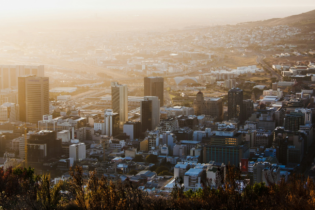Latest epidemiological models have revealed that the COVID-19 infection peak in the Western Cape will take place from late July through early August.
By Deon Bester, OHS Manager at the Master Builders Association Western Cape This is both longer and flatter than anticipated, said Premier Alan Winde. Although this will assist with the capacity of the healthcare system, it means that the worst of the pandemic is still to come. “You have the power to change this curve again,” he said, explaining that by wearing a mask, keeping a distance, and good hygiene, we could flatten the curve further. With the economy opening up significantly, and more people going to work, including the construction sector, it is now more important than ever that the industry follows strict health and safety guidelines to prevent infections. Although the construction sector has been a leader in formulating and implementing measures around COVID-19, it is vital that companies prepare to continue to comply with health and safety procedures to weather the storm, says Deon Bester, OHS Manager at the Master Builders Association Western Cape (MBAWC). He points out that, in 2019, the construction industry contributed approximately R32 billion to the Western Cape’s total gross value, and in order to boost economic growth and protect jobs, it is vital to continue to attract fixed capital investment – which the country so desperately needs. In order to assist construction companies, Bester has compiled a list of pointers to mitigate the risks on-site as far as possible: Risk assessment and compliance It is essential that contractors carry out a risk assessment on-site. He advises that companies assign an employee with the task of being a dedicated COVID-19 protocol monitor to ensure continuous compliance, particularly relating to access control, eating areas and toilet/washing facilities. This also applies to subcontractors, who need to make sure their employees know the compliance protocols and are screened before going to a site.Transport of workers
Employer-provided transport must be well-ventilated and have space to sit well apart. Masks should be worn in both employer and public transport and employees should ensure that their hands are sanitised before getting into a vehicle and then again after getting out. Access to site Ideally, there should be only one access point to a site, and everyone entering must be screened and socially distanced whilst they wait to enter. There should also be a separate exit point from the site to prevent crowding. Drivers and assistants in delivery vehicles must be screened and sanitised as well, and drivers should stay in their vehicles where possible. Working on-site Social distancing is not always possible during all construction tasks, so all workers must wear masks at all times. Handwashing stations should be available in strategic areas. All commonly used tools must be sanitised before and after use. All workers must receive all PPE (personal protective equipment) free of charge, including two reusable cloth masks. They must be trained in how to use them properly. Workers doing hard physical labour can use a clear face shield instead of a mask. A big challenge faced by the country is the lack of understanding of how serious this pandemic actually is. Many South Africans do not practice social distancing, wear masks or wash their hands properly. Contractors also have no control over their workers once they leave the site when they are on public transport or while they are at home. “We must convince people to practice the same work-level protocols when they are not at work,” Bester said. “We have to educate, educate and then educate some more.”







